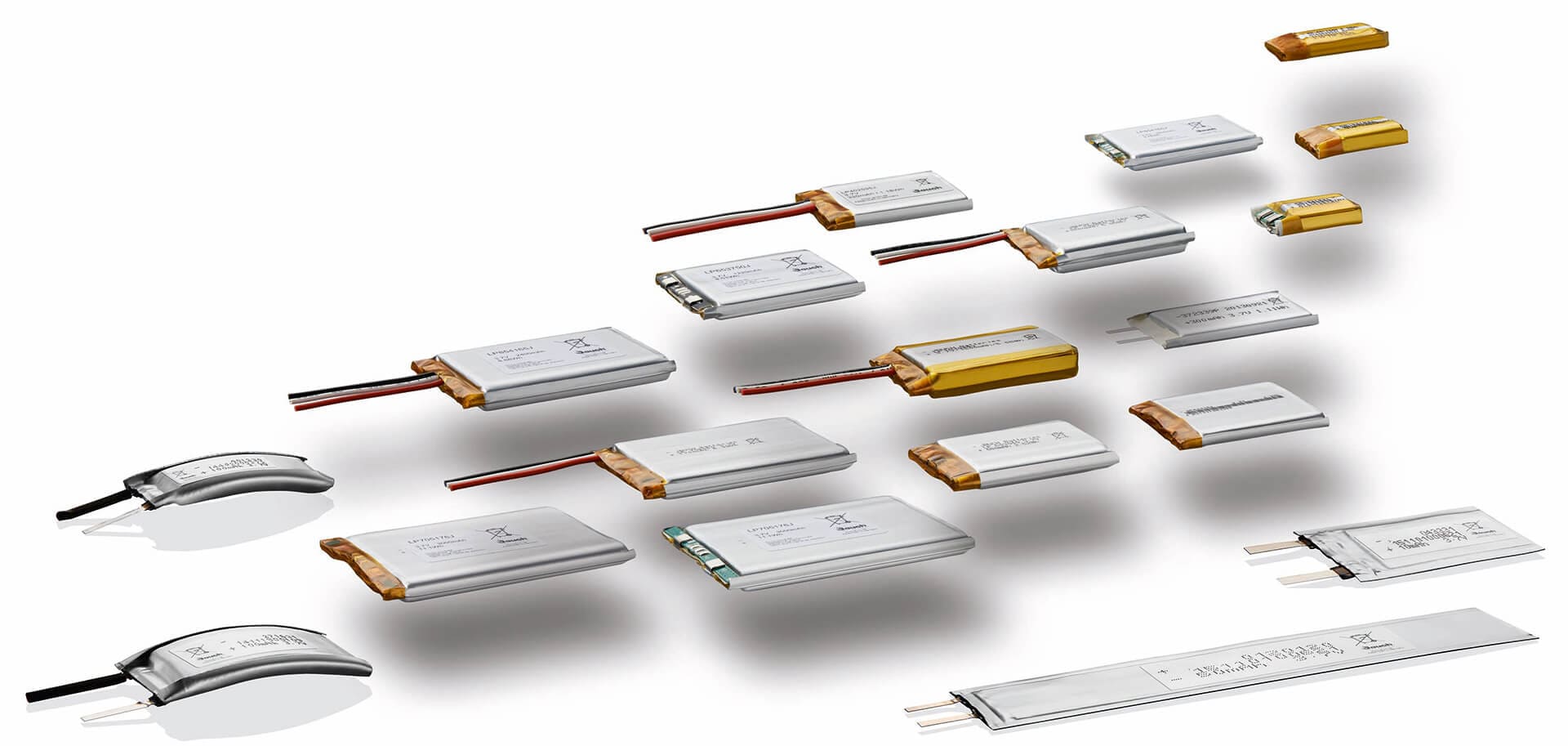Lithium polymer batteries differ from conventional battery systems in the type of electrolyte they use. The original design dates back to the 1970s and used a dry solid polymer electrolyte. This electrolyte resembles a plastic-like film that does not conduct electricity but allows the exchange of ions (charged atoms or groups of atoms). Polymer electrolytes replace traditional porous separators, which are filled with electrolyte.
Dry polymer design for ease of manufacturing, robustness, safety and low profile geometry. With a cell thickness of just 1 millimeter (0.039 inches), device designers can use their imaginations in shape, shape and size.
Unfortunately, dry lithium polymers have poor electrical conductivity. The internal resistance is too high to deliver the bursts of current needed to power modern communication devices and spin the hard drives of mobile computing devices. Heating the battery to 60°C (140°F) or higher increases conductivity, an unsuitable requirement for portable applications.
To compromise, some gelled electrolyte was added. Commercial batteries use separator/electrolyte membranes made from the same conventional porous polyethylene or polypropylene separators filled with polymers that gel when filled with a liquid electrolyte. As a result, commercial Li-ion polymer batteries are chemically and materially very similar to their liquid-electrolyte counterparts.
Lithium-ion polymers have not caught on as quickly as some analysts expected. Its advantages over other systems and lower manufacturing costs have not yet been realized. The increase in capacity didn't improve—in fact, the capacity was slightly less than that of a standard lithium-ion battery. Lithium-ion polymers have found a market advantage in wafer-thin geometries, such as credit card batteries and other such applications.

The main advantages of lithium polymer batteries are as follows:
1. The working voltage of a lithium polymer battery cell is as high as 3.6v~3.8v, which is much higher than the 1.2V voltage of nickel-hydrogen and nickel-cadmium batteries.
2. Lithium polymer battery has a large capacity density, which is 1, 5~2, 5 times or higher than that of Ni-MH or Ni-Cd batteries.
3. The self-discharge of lithium polymer battery is small, and its capacity loss is also very small after being placed for a long time.
4. The lithium polymer battery has a long lifespan, and its cycle life can reach more than 500 times under normal use.
5. Lithium polymer battery has no memory effect, so it is not necessary to empty the remaining power before charging, which is convenient to use.
6. Good safety performance: The polymer lithium battery adopts aluminum-plastic soft packaging in structure, which is different from the metal shell of the liquid battery. Once a safety hazard occurs, the liquid battery is easy to explode, while the polymer battery will only blow up at most.
7. Small thickness, can be made thinner: Lithium polymer battery is ultra-thin, and the battery can be assembled into a credit card. Ordinary liquid lithium batteries adopt the method of customizing the shell first, and then plugging the positive and negative materials. There is a technical bottleneck when the thickness is less than 3 or 6mm. This problem does not exist for polymer batteries. The thickness can be less than 1mm, which meets the needs of current mobile phones direction.
8. Light weight
Lithium polymer batteries use polymer electrolyte batteries without a metal case as a protective outer packaging. Polymer batteries are 40% lighter than steel-cased lithium batteries with the same capacity and specifications, and 20% lighter than aluminum-cased batteries.
9. Large capacity
Lithium polymer batteries have a capacity 10-15% higher than steel-shell batteries of the same size and specifications, and 5-10% higher than aluminum-shell batteries. Using polymer batteries.
10. Small internal resistance
The internal resistance of polymer lithium battery cells is smaller than that of ordinary liquid cells. At present, the internal resistance of domestic polymer cells can even be less than 35mΩ, which greatly reduces the self-consumption of the battery and prolongs the standby time of the mobile phone. Can reach the level of international standards. This kind of polymer lithium battery that supports large discharge current is an ideal choice for remote control models and has become the most promising product to replace NiMH batteries.
11. The shape can be customized
Manufacturers are not limited to standard form factors and can be economically made to size. Polymer lithium batteries can increase or decrease the thickness of the battery cell according to the needs of customers, and develop new battery cell models, which are cheap and have a short mold opening cycle. battery capacity.
12. Good discharge characteristics
Polymer lithium batteries use colloidal electrolytes, which have stable discharge characteristics and a higher discharge platform than liquid electrolytes.
13. The design of the protection board is simple
Due to the use of polymer materials, polymer lithium battery cells do not catch fire or explode, and the battery itself is sufficiently safe. Therefore, the protection circuit design of polymer batteries can be considered to omit PTC and fuses, thereby saving battery costs.
Lithium Polymer Battery Limitations
1. Compared with Li-ion, the energy density is lower and the number of cycles is reduced.
2. Expensive to manufacture.
3. There is no standard size. Most batteries are produced for the high-volume consumer market.
4. The cost/energy ratio is higher than Li-ion
Lithium polymer battery maintenance method
When using the battery, try to be careful not to overcharge or overdischarge, that is, to use the battery steadily and in a planned way, do not let the battery run out easily, and do not charge the battery continuously for too long (generally within 8 hours) is most suitable).
If you want to maintain the power of the lithium polymer battery, it is best to fully discharge it every month and then recharge it once, which will help the battery maintain power and have a longer service life.
Post time: Apr-06-2023



